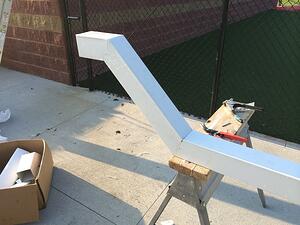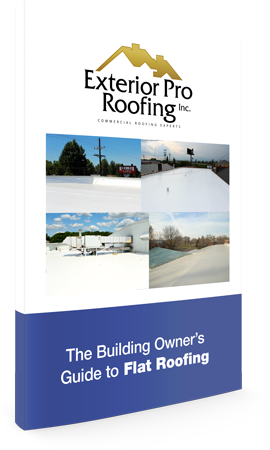Commercial gutter systems are not the same as residential gutters. While the gutter materials have similarities, the styles, sizes and durability requirements differ. Commercial buildings also normally have different legal or building code requirements, depending on city or county regulations.
 Commercial Gutter Styles
Commercial Gutter Styles
Gutters do come in several styles. K-style or U-shaped are often used for residences, with U-shaped a popular choice for copper guttering. The K-style has a profile that resembles a K and looks similar to crown molding when installed. This style can be used for commercial applications and does provide an attractive appearance.
Box gutters are frequently used in commercial installations. The shape allows for more water volume than a similarly sized K-style gutter. This shape gives additional protection for larger buildings with higher water run-off. Box guttering is slightly more prone to collecting debris, but most commercial building do not have large trees overhead to present a problem.
Box guttering can also be manufactured in larger sizes to meet greater volume needs. For commercial buildings that do have leaf or debris issues, guards can be added to reduce build up and maintenance problems.
Commercial Gutter Size
Gutters can be manufactured in a variety of sizes, but commonly come in five-inch and six-inch widths. The five-inch size is most frequently used in residential applications. Commercial buildings are normally larger, with a larger roof area. The extra run off requires the larger six-inch size gutter.
A small commercial building could use a smaller gutter, but the water volume is an important consideration. The larger gutter size will also provide the additional durability needed for commercial applications. The downspout size is also a factor. Five-inch gutters will normally use 2 x 3 inch downspouts; six-inch systems use 3 x 4 inch downspouts. Adaptations can be made.
Materials Used for Commercial Guttering
The highest durability comes from 24 gauge galvanized steel or heavy aluminum. Steel offers exceptional durability for commercial purposes. Steel guttering is heavy and must be installed properly to avoid pulling away from the building under heavy use. Aluminum is available in different gauges and thicknesses. It does provide a lighter weight gutter and will not rust.

Steel and aluminum guttering can have protective coatings added to reduce corrosion, add durability and provide color. This should be done by the manufacturer, painting gutters after installation is not recommended.
Copper guttering is an option for commercial use. It is more frequently used in residential applications due to its appearance. The copper develops a patina that adds a unique look to the property. However, copper can be used for commercial properties and may provide a distinct look that the building or area requires. Vinyl is not normally used for commercial gutters. This is a lower cost alternative for residential guttering.
Code Requirements
Codes do vary by location, but due to the size of commercial buildings, gutter systems are usually covered under building regulations. These requirements normally involve the size and material of the gutter used. Many areas also place restrictions on where the run off is directed in order to reduce flooding to nearby buildings or sewer systems.
When you work with a professional commercial gutter company, they will know the requirements for your building size and any regulations that apply for your location. You also have the benefit of commercial experience, which makes a difference in the installation and how well your gutters last.







